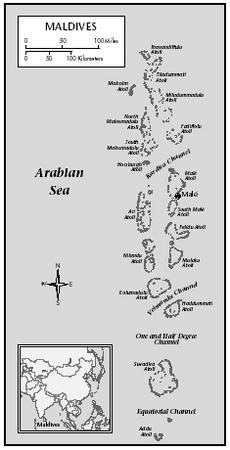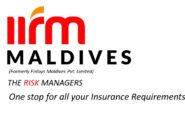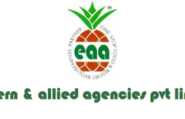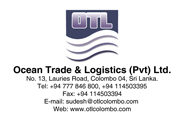The Culture of Maldives
Identification.The Maldives is one of the world’s poorest developing countries. It is threatened by global warming because of its very low elevation. The main natural resources are fisheries and a marine environment conducive to tourism. The other constraints it faces are small and widely dispersed island communities, limited skilled human resources, and rapid population growth.
Location and Geography.The Republic of Maldives is an archipelago consisting of twenty-six coral atolls, in the northern Indian Ocean. The chain of islands extends 510 miles (820 kilometers), but occupies an area of just 116 square miles (300 square kilometers), roughly 1.5 times the size of Washington D.C. The closest neighbors are India and Sri Lanka. The capital is Malé.
The twenty-six coral atolls contain 1,190 very small islands of which 198 are inhabited. Most of the islands are close to the atoll enclosure reef, and some are still in the process of forming. The longest is Gan in Adu atoll. Because the islands are coral-based, they are flat and low-lying. As a result, the water table is high. However, the islands are protected from the elements by the reef and rarely have major storms. In the older islands a larger layer of topsoil has formed, and these islands are covered with coconut trees, breadfruit, and dense shrubs. Agricultural potential is limited by the high alkalinity of the soil and its poor water retention. However, people grow vegetables, fruits, and yams.
The climate is warm and tropical. Seasonal changes are determined by the two yearly monsoons. The season of the northeast monsoon is characterized by dry, mild winds, and generally extends from December to April. The southwest monsoon, although irregular, extends from May until August and brings heavy rains and wind. The northern atolls are drier, while the southern atolls are wetter. The humidity is fairly high throughout the year.
Demography.In 1996, the population was 256,157, compared with 195,000 in 1986; the estimated population for the year 2000 is 289,117. The annual rate of population growth is almost 3 percent. Almost most half the population is under fifteen years of age, and about 3 percent is sixty five years and older. About 25 percent of the population reside in Malé. The growth rate in Malé atoll has been high as a result of employment opportunities offered by growth in the service sector. Even though income in Malé is significantly higher than that in the atolls, the resulting rural-urban migrationhas led to increasing unemployment. Emigration from the republic is rare except for educational purposes or to work as a crew member on Maldivian ships.
Linguistic Affiliation.Dhivehi, which is spoken in all parts of the country, is not spoken in any other part of the world. It is considered an Indo-European language related to Singhala, the language spoken in Sri Lanka. The alphabets and writing system are similar to Arabic. English is the second language and is widely used in commerce and in many government schools.
Symbolism.The national flag is red with a large green rectanglein the center bearing a vertical white crescent on the hoist side. The country is associated with the “maldive fish” (boiled sun-dried tuna).
History and Ethnic Relations
Emergence of the Nation.The early settlers probably came before 500B.C.E., from Sri Lanka and southern India. In the twelfth century, sailors from East Africa and Arab countries arrived. Originally, Maldivians were Buddhists, but in the twelfth century Islam was proclaimed the national religion.

The Maldives has always been an independent political entity except when it was under Portuguese control from 1558 to 1573. In 1887, the Maldives agreed to become a protectorateof the British government, allowing the British to take responsibility for it defense and foreign relations while maintaining for itself internal control. The first constitution was ratified by the Sultan in 1932, and the sultanate became an elected rather than hereditaryposition.
National Identity.The Maldives regained full sovereignty in 1965 and joined the United Nations that year. In 1968, the sultanate was abolished and the republic was declared. On 11 November 1968, the Republic of Maldives was created with an elected president. The country joined the British Commonwealth in 1982.
Ethnic Relations.The population consists of a mix of people who trace their descent from Sri Lanka, India, Arab countries, and Africa. Because of religious and linguistic homogeneity, there is stability and unity.
Urbanism, Architecture, and the Use of Space
Malé is the center of political and economic life. It has a maze of narrow streets with over twenty mosques and markets. Poor people live in houses built from thatchedpalm with tin roofs, and the more prosperous have houses made of crushed coral with tile roofs. The main attractions are the National Museum, which displays items from Arab, Sri Lankan, andDravidiancultures; Sultan Park; the Islamic Centre; and the gold-painted Grand Friday mosque. The oldest mosque, Hukuru Miski, is known for its intricate stone carvings.
Food and Economy
Food in Daily Life.Rice and fish are the staple foods. Fish is the most important source of protein in the average diet. Very few vegetables are eaten. Betel leaf with arecanut, cloves, and lime, known asfoh,is chewed after meals. Old people smokeguduguda,an elongated pipe that goes through a trough of water. Most food served in tourist resorts is imported.
Food Customs at Ceremonial Occasions.Meat other than pork is eaten only on special occasions. Alcohol is not permitted except in tourist resorts. The local brew,raa, is a sweet toddy made from the crown of the coconut palm.
Basic Economy.All the fish that is consumed locally is from the domestic economy. Basic food commodities such as rice, sugar, and flour are imported. There are over seventy resort islands near the capital.
Land and Tenure and Property.Land belongs to the state and is given free to families in the island of their origin to build houses. The only exception is that public servants lease land where they work. In other islands, where tourist resorts, a cannery, the airport, and other small industries are located, employees are provided with temporary accommodations.




